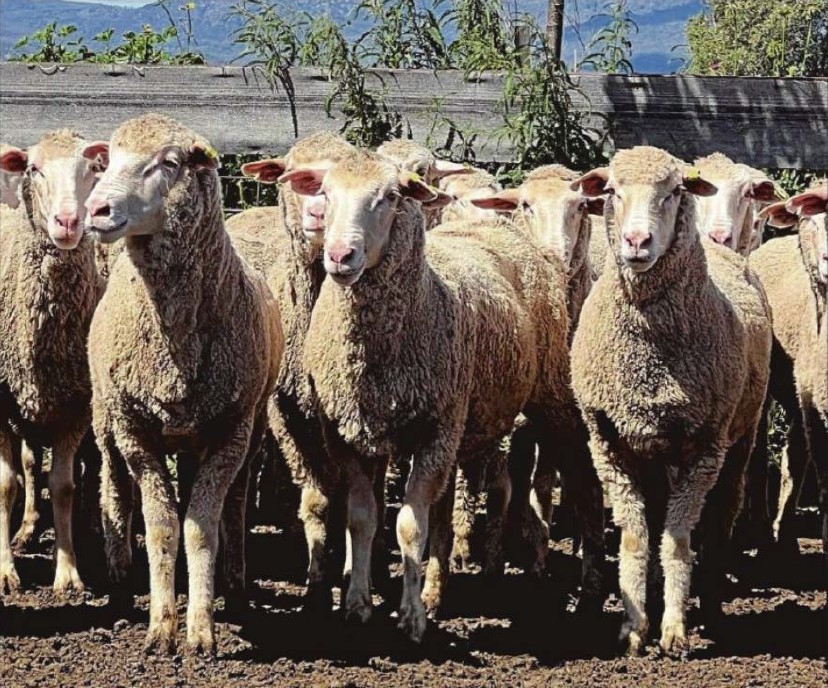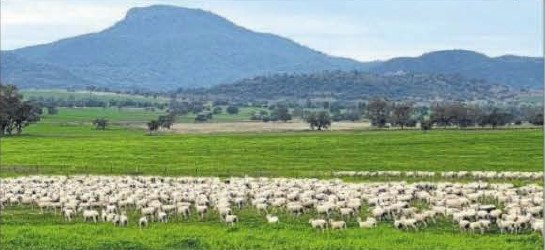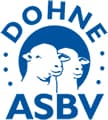Dual-purpose Dohnes pay off
BY KYLIE NICHOLLS The Land
THE dual-purpose attributes of the Dohne breed are paying dividends for the Webb family, providing increased marketing options for both their quality lambs and wool.
Based at the foothills of the Warrumbungle Mountain range in the state’s central west, Malcolm Webb and his family made the change to Dohnes more than 15 years ago, and continue to be pleased, with the breed’s ease of care, early growth and wool quality.
The Webb family currently run a self-replacing flock of 4100 Dohne ewes as part of a mixed farming operation on their 4400-hectare property, Miagunyah.
The sheep are run alongside an extensive cereal cropping program, sowing oats, barley and wheat, as well as an Angus herd of 90 breeders.
“We decided to make a switch from Merinos to Dohnes because we wanted to phase out mulesing which was much easier to do with a plain-bodied Dohne and we wanted to move to polled rams,” Mr Webb said.
“We were also looking for a dual-purpose sheep that was early maturing with a heavier carcase.
“Since making the change, the wool we are producing has dropped a full micron and our ability to turn-off sheep at a quicker rate has significantly improved.
“Previously with our Merino lambs, we would always have a tail that you’d have to carry across as wethers, but now the lambs finish quicker and at the end of the lamb selling season we certainly have less tail.
“The ewes are also heavier which has meant we receive better prices when it comes to selling our older ewes.”
Mr Webb is a long-term client of the Pye family’s Calga Dohne stud at Coonamble, using a mix of visual appraisal and Australian Sheep Breeding Values to select his high-performing rams.
“Fleece weight is important, all the rams I buy are above breed average for fleece weight,” he said.
“If the ewes can average a wool cut of 5.5 kilograms plus per head and they’ve produced more than 100 per cent of lambs, I’m happy with that.
“Visually, I’ll look for the heavier, earliest maturing rams, this game is all about turnover and the sooner you can turn your lambs off the better.
“Wool quality is also important, since we’ve been breeding Dohnes, their wool has improved significantly.
“Last year we had 1100 millimetres for the year and the fleeces stood up very well in the wet conditions.”
The adult ewe flock currently averages about 20 micron, while the lambs wool average is 18 micron.
The breeding program is split with one-third of the ewes lambing in April and two-thirds of the flock lambing from late August onwards.
“Having two lambings has enabled better utilisation of our rams and gives us a few more lambs on the ground at a different time of year which gives us increased market flexibility,” Mr Webb said.
“It also helps with ease of management and fits well with our main shearing which is in July.”
All the ewes are pregnancy scanned for pregnant and non-pregnant status, with any dry ewes sold immediately which Mr Webb believes has contributed to the in-built fertility of his flock.
“My lambing percentages have certainly lifted since changing to Dohnes, but I am not chasing really high fertility rates, because if you get into a dry season, with too many multiples it is just too hard,” Mr Webb said.
“If I can average between 105 to 112pc lamb marking rates which we are consistently achieving, I will be happy.”

The Webb family, Miagunyah, Warrumbungles, made the switch to Dohnes more than 15 years ago and continue to be pleased with the breed’s performance. Picture supplied
Strong demand for quality Dohne lambs
BEING a member of the innovative Tooraweenah Prime Lamb Marketing Co-operative has given Dohne breeder Malcolm Webb, a direct marketing outlet for his quality lambs.
Currently running a pure Dohne flock of 4100 ewes at Miagunyah, Warrumbungles, Mr Webb has been a member of the Gilgandra-based group for the past few years, which aims to market as many lambs as possible over the hooks.
Mr Webb’s livestock agent George Skuthorp from GPS Rural in Coonamble works closely with the group to manage the marketing services for the co-operative, which currently comprises more than 90 prime lamb and beef producer members.
“The aim of the group is to sell as many stock as possible direct to the abattoirs, rather than through the saleyards,” Mr Webb said.
“We can offer our lambs in larger lines and get a confirmed price from the abattoir.”
All Mr Webb’s lambs are weaned at about 12 to 14 weeks of age and moved on to high quality pastures, grazing crops or dryland lucerne to be grown out.
Paddock self-feeders and good quality pasture hay will also be supplemented if required.
But this season, Mr Webb has been forced to place 1500 of his Dohne lambs into a custom feedlot at Tooraweenah to be finished.
“We’ve only had 200mm so far for the year, it has been a very dry winter,” he said.
“Because the season has packed it in, we decided to get the wether lambs off the property and focus on looking after our breeding stock.
“Pulling them in the feedlot was the most lucrative way of marketing them.”
The heavier drafts of lambs ,will be sold in the next few weeks to Thomas Foods International at Tamworth, ,with a dressed weight of 26 to 27 kilograms targeted.
The Dohne ewe lamb replacements from both the autumn and spring lambing flocks are classed before shearing with emphasis on wool quality, size and weight.
Surplus ewe lambs will generally be sold on AuctionsPlus at 12 to 14 months of age, ready to be joined.

Malcolm Webb, Miagunyah, Warrumbungles, aims to sell his Dohne wether lambs over the hooks at a target dressed weight of 26 kilograms plus. Picture supplied










 Facebook
Facebook YouTube
YouTube Instagram
Instagram